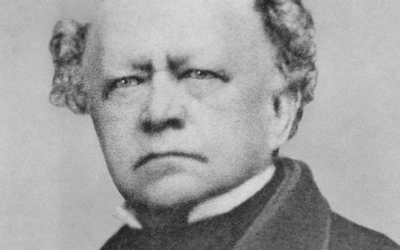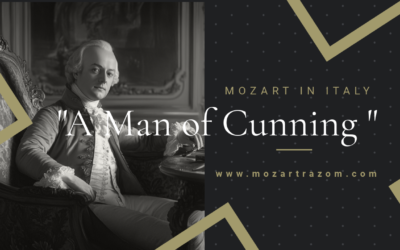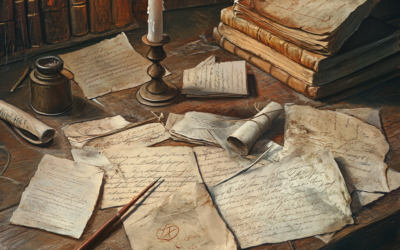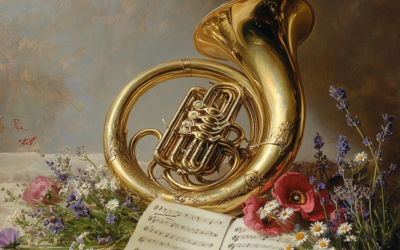The Questionable Origins of Mozart’s Violin Concertos
A Closer Look at the Ambiguities and Influences
Mozart’s first five violin concertos, composed in just eight months during 1775, present numerous contradictions, from unclear dates on manuscripts to varying levels of technical difficulty. These inconsistencies raise doubts about the true origins of these works.
Could Josef Mysliveček, a contemporary of Mozart, have provided more than just inspiration? Was Mozart’s “genius” merely an appropriation of ideas from those around him?
This article examines these questions, focusing on the stylistic similarities between the concertos and the works of Mysliveček.
Mozart: The Fall of the Gods
This book compiles the results of our studies on 18th-century music and Mozart, who has been revered for over two centuries as a deity. We dismantle the baseless cult of Mozart and strip away the clichés that falsely present him as a natural genius, revealing the contradictions in conventional biographies. In this work, divided into two parts, we identify and critically analyze several contradictory points in the vast Mozart bibliography. Each of the nearly 2,000 citations is meticulously sourced, allowing readers to verify the findings. This critical biography of Mozart emerges from these premises, addressing the numerous doubts raised by researchers.
"The undeniable influence of Mysliveček on Mozart’s violin concertos leaves one to wonder where genius ends and imitation begins."
Mozart: The Fall of the Gods
Contradictions in Manuscripts and Dates
The first five violin concertos attributed to Mozart—K.207, K.211, K.216, K.218, and K.219—are said to have been written between April and December 1775. Yet, the manuscripts tell a different story. The date for K.207, for example, appears multiple times on the autograph, suggesting “April 13, 1775,” “April 14, 1775,” or even “April 1780.” The numerous revisions of dates raise suspicion about when—and perhaps by whom—these works were truly composed.
Adding to the confusion is the absence of any commissioner for the concertos. These were not works requested for a particular occasion, which was unusual for Mozart, a composer who rarely wrote without a specific purpose. Moreover, the varying technical difficulty and style within the set of five concertos suggest inconsistencies not typical of a singular composer working on a cohesive project.
The Influence of Josef Mysliveček
It is impossible to ignore the role that Josef Mysliveček may have played in these works. Mozart met the Czech composer during his Italian travels, and their friendship endured until around 1778. Mysliveček’s influence on Mozart is particularly evident in K.207, which bears striking resemblances to his earlier compositions. The syncopated opening of K.207 mirrors Mysliveček’s style, and the structure of its movements closely follows the standard forms found in Mysliveček’s violin concertos.
Notably, Wolfgang Plath, a 20th-century Mozart scholar, suggested that K.207 might have been written as early as 1773, based on an analysis of the paper used for the autograph. However, even if we accept this earlier date, the question remains: how much of Mozart’s first violin concerto is truly his?
Borrowing or Imitation?
The similarities between Mozart’s violin concertos and those of Mysliveček extend beyond K.207. In fact, K.211, known as the “Concerto facile,” and K.218 also exhibit clear influences from Mysliveček’s compositions. Several phrases from these concertos reappear in Mozart’s later works, including his serenade Il Re Pastore.
Mozart himself acknowledged this practice of borrowing, as evidenced by a letter in which he humorously mentioned copying the title page of one of Mysliveček’s concertos. But did the borrowing stop at the title page? The resemblances between the two composers’ works suggest that Mozart, still learning the ropes of concerto composition, leaned heavily on his friend’s established mastery.
The Legacy of Collaboration
While some may argue that Mozart’s borrowings were merely a tribute to Mysliveček’s genius, others suggest a more collaborative relationship between the two. As musicologist Giuseppe Rausa theorizes, the two composers may have exchanged favors, with Mysliveček gifting Mozart some of his works in exchange for assistance with commissions in Salzburg.
If so, what does this say about the authorship of works like K.216, often hailed as a masterpiece? The structure and virtuosic demands of K.216 align more closely with Mysliveček’s style than with Mozart’s early works. Could this celebrated concerto have been more an act of appropriation than of creation?
You May Also Like
Mozart’s Music or Marketing Strategy?
Despite Köchel’s best intentions, his catalogue of Mozart’s works became a commercial tool, filled with questionable pieces added by publishers keen on profit rather than accuracy.
A Revolutionary Encounter at Cremona Musica
Sharing insights on Mozart and the Neapolitan school at Cremona Musica, the premier global stage for music and culture.
#1 A Man of Cunning
In the end, Leopold Mozart’s life was a testament to survival in a world where his talents were often overshadowed by those of his more gifted contemporaries and his own son. While his “Violinschule” remains a notable contribution to music pedagogy, it is clear that Leopold’s legacy is as much about his ability to navigate the challenges of his time as it is about his musical achievements. His story is one of ambition, adaptation, and the lengths to which one man would go to secure his place in history, even if that place was built on borrowed foundations.
@MozartrazoM
Mozart’s Letters: A Legacy of Disappearances, Edits, and Forgeries
Mozart’s letters reveal missing originals, questionable authorship, and forgeries, adding complexity to his legacy.
The Curious Case of Mozart’s “Lullaby”
Though long credited to Mozart, the lullaby “Schlafe mein Prinzchen, schlaf ein” hides a murky history. Initially published by Nissen, Constanze’s second husband, it has endured as one of Mozart’s supposed works—despite a trail of doubts. In 1798, Constanze herself noted sending “another piece of Mozart’s in place of the lullaby,” raising questions about its origins. By the 20th century, researchers revealed it as the work of lesser-known composers, yet it remains deceptively tied to Mozart, its myth surviving through mere footnotes.
The Contradictions Behind Mozart’s Horn Concerto K.412
The authenticity of Mozart’s Horn Concerto K.412 remains hotly debated, as the work bears numerous contradictions in its manuscript history. The first movement may be original, but what about the rest? The inclusion of Franz Xaver Süssmayr and later editorial meddling raises serious questions about what we are really listening to when we hear this ‘Mozart’ concerto.







